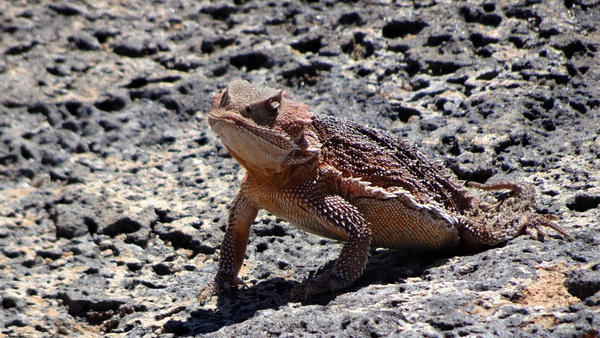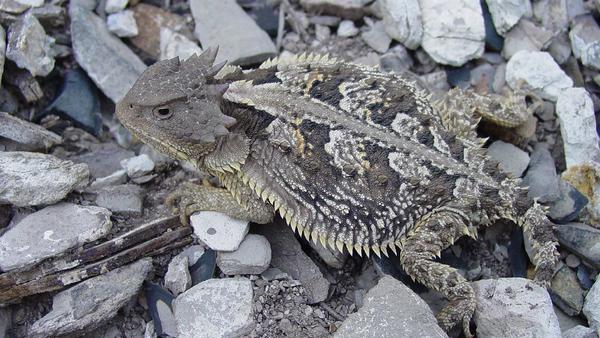Happy World Lizard Day!
Cal Naturalist update from Aug. 14Happy World Lizard Day!! We live in the perfect spot to celebrate our saurian friends — there is nowhere else in North America with as many species of native lizards concentrated into such a small area.
Still, to come up with some measure of lizard biodiversity, lizard species richness, we are faced with the challenge of defining what we mean by a species. Even Charles Darwin, who of course wrote “The Origin of the Species” couldn’t put his finger on a definition that fit all situations. Most folks who have thought about this would say any individuals who can breed together and produce viable, reproducing offspring, are of the same species. But what about those parthenogenetic whiptails I mentioned last week? What about fringe-toed lizards who live on separate, isolated dunes and so could never even attempt to breed together? Scientists are more and more resorting to genetics to guide their ideas about species.
I have been thinking about this because of two research papers I read this week, both using genetics to define the number of species of horned lizards. One of the papers focused on what we used to call coast horned lizards, Phrynosoma coronatum, a species with a range that extended from northern California to the tip of Baja California.
Over the past 180 years there have been some 20 different attempts to define just how many species are really represented by the changes in appearance, color and morphology, along this long and narrow distribution. The number of species being argued over those years have varied between 1 and 6.
I have a friend who was a professor of herpetology at California State University Fullerton for decades, and at more than 90 years old is still writing books about lizards and life. He is convinced that it is just one wide-ranging species. It makes some sense, since there are no obvious geographic barriers that would result in genetic isolation. But the genetics tell a different story, a story of three species. P. blainvillii (Blainville’s horned lizard) occurs primarily in California, with just a bit of their range in northern Baja. Then in central Baja there is P. cerroense, and then in the cape region there is P. coronatum. Genetics doesn’t just capture today's world and geography, it also provides a window to the past when different sea levels and different climates could have easily created barriers that don’t exist today.
The other paper I read caught my attention because it had a picture of a horned lizard that looked almost identical to the greater short-horned lizard, P. hernandesi, I saw last week in Flagstaff. Except this wasn’t that species, it was P. orbiculare, a species only found in the mountains of Mexico. Both species live in much the same high elevation habitats, and look so much alike, but again, the genetics tell a different story. Not only are the two unrelated, but the analysis discovered that P. hernandesi is actually two different species, and our desert horned lizard P. platyrhinos may be two or more species as well.
Why is this important? From a conservation perspective, a goal is to ensure that the range of genetic diversity that nature has created is not lost due to the ignorance of our species. My metaphor to that end is that if a library was filled with one-of-a-kind books, books that were filled with knowledge of the ages, but for some time no one visited the library, who among us would advocate for demolishing that library to make room for some new attraction? Of course, few if anyone would. But that is what we lose when a species goes extinct. So, if we are going to protect genetic diversity we need to know where it exists.
Go outside, tip your hat to a lizard, and be safe.

